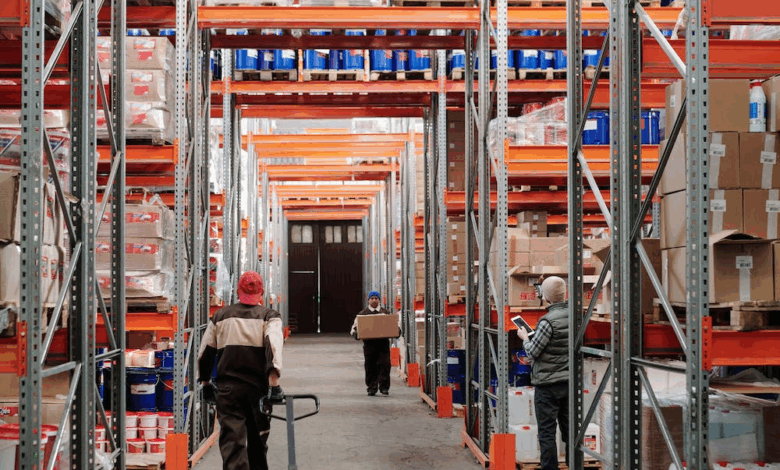
Over the past few years, supply chains have faced an unprecedented wave of disruption. From the effects of the pandemic to geopolitical uncertainty, inflation, and shifting consumer demands, businesses have had to rapidly rethink how they plan, move, and manage goods. Artificial intelligence (AI) is no longer a futuristic concept; it’s already being deployed to solve real problems and enhance operations when it comes to forecasting, logistics, and inventory planning. However, while its potential is enormous, success hinges on where and how AI is applied across supply chains.
The urgency of adaptation
Today’s supply chains must contend with fluctuating demand, rising costs, evolving customer expectations, and increasing pressure to improve sustainability – all of which could render traditional planning tools unfit for purpose. AI offers a new approach that enables smarter, faster decision-making through real-time data analysis, pattern recognition, and predictive modelling. For example, AI may be able to predict a heatwave-driven surge in demand for BBQ food by analysing real-time weather and sales data, enabling retailers to restock in advance and reduce waste. This increased agility enables organisations to remain competitive in an ever-changing landscape.
What AI means when it comes to supply chain optimisation
At its core, introducing AI is about enabling systems to learn, adapt, and make decisions based on data. In addition to predictive analytics, natural language processing can extract insights from unstructured data like emails or reports.
AI should not be viewed as a replacement for human decision-making, but as a tool that enables people to make better-informed decisions based on AI insights. When supported by clean, structured data and effectively integrated systems, AI can enhance the expertise of planners, buyers, and logistics teams – helping them act faster and with greater confidence and accuracy.
Interestingly, data from SCALA’s 2024 Annual Debate suggests that companies who adopt AI don’t necessarily cut headcount – in fact, they often end up employing more people. The roles available may simply change, and the jobs which remain will likely be more interesting and creative. Far from replacing jobs, when implemented effectively, AI can unlock growth and improve working conditions.
However, organisational readiness can present a barrier to realising the full benefits of AI integration. At the above debate, 84% of attendees agreed that ‘people and enthusiasm’ were the most important factors in enabling the successful and speedy adoption of AI. Yet over half (57%) also cited ‘people’ as the biggest barrier to making large-scale transformation happen. This underlines the need for effective change management, skills development, and cultural buy-in – not just technical capability.
Smarter forecasting and demand planning
One of the most widely proven applications of AI is in demand forecasting. By analysing sales history, promotional activity, seasonality, external trends, and even weather patterns, AI can generate far more accurate forecasts than traditional models. This reduces stockouts, minimises excess inventory, and improves service levels. It also helps align production and procurement with actual market demand, rather than outdated assumptions. However, AI’s effectiveness here relies on ready access to an accurate, existing data pool.
Inventory and network optimisation
AI can enable more intelligent control over inventory placement and product flow across supply networks. For example, AI could be used to identify that a regional warehouse should hold more fast-moving items ahead of a local holiday surge, while slower lines are redirected to a central hub – balancing stock levels efficiently across the network. Factors such as demand variability, lead times, capacity constraints, and costs can be considered to optimise stock levels at each location. This can lead to improved availability, leaner operations, and better use of working capital — all without sacrificing customer service.
Logistics and delivery efficiency
Route optimisation is another area in which AI can be a useful asset. By analysing real-time traffic data, weather conditions, and delivery time windows, AI can create dynamic route plans that reduce fuel usage and improve delivery reliability. This is particularly valuable in last-mile logistics, where speed and precision have become increasingly critical to customer satisfaction.
Warehouse and fulfilment automation
AI can also support automated picking, packing, and sorting by powering robotics and vision systems that can adapt to changing product profiles and workflows. This can improve both speed and accuracy, while also helping businesses respond to labour shortages and rising order volumes.
In the Robotics and Automation report, research found that the most common benefits of automation were greater productivity (66%), better ability to meet customer demand (66%), and cost savings (62%). However, the benefits are only realised when automation is integrated effectively into existing operations.
Supplier risk monitoring
AI can also be used to assess supplier performance and flag potential risks at an early stage. By drawing on structured data such as delivery records and financial performance – along with unstructured sources like news reports or geopolitical data – AI can help organisations identify potential disruption before it makes an impact. This can support more informed sourcing decisions and strengthen supply chain resilience.
Outcomes and the road ahead
Many organisations that have adopted AI effectively are already seeing tangible results, from reduced operating costs and improved on-time delivery to greater inventory accuracy and better visibility across the supply chain. But it’s important to recognise that these outcomes are not, like the technology behind them, ‘automatic’. Success depends on setting clear objectives, investing in the right data infrastructure, and building internal capability to interpret and act on AI insights.
Conclusion
AI is not a silver bullet, but it can be a powerful enabler of smarter, faster, and more resilient supply chains. When adopted strategically, it helps businesses respond to disruption, reduce costs, and deliver better outcomes for customers and stakeholders alike.
Adopting AI doesn’t have to mean investing millions in a full-scale digital transformation from day one. In fact, some of the most impactful gains come from smaller, targeted applications, such as automating routine warehouse tasks. By identifying pain points and deploying AI in focused, high-value areas, businesses can achieve quick wins and build momentum for further change. Strategic, incremental investment can deliver better long-term value than attempting to overhaul everything at once in some cases.
I see the greatest success where AI is implemented as part of a broader transformation journey – not as a stand-alone fix, but as a tool embedded within a culture of continuous improvement and data-driven thinking.
Organisations that invest now, with clarity, purpose, and a focus on value, will be best placed to unlock the benefits of AI as it continues to evolve and reshape the future of supply chain management.




